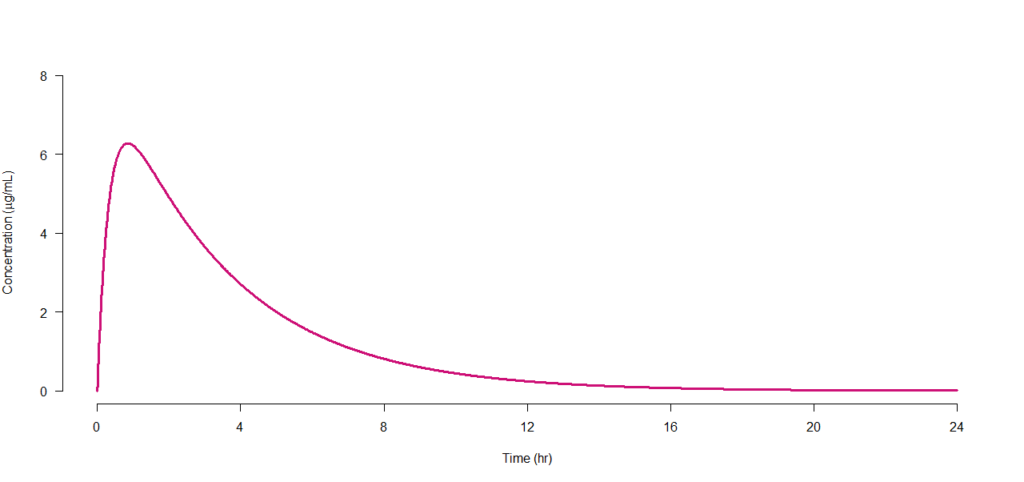In short, the word is derived from “pharmakon” meaning drug and “kineticos” meaning movement. Therefore, pharmacokinetics defines as the movement of drugs in the body. Pharmacokinetics can be thought of as what the body does to the drug.

Concentration versus time profile following a single oral dose.
Movement of drugs in the body is described by the acronym ADME, which stands for absorption, metabolism, distribution, and excretion
Absorption – Following extravascular drug administration, the drug needs to be absorbed into the systemic circulation. Following an oral dose, the drug is taken up from the gastrointestinal tract via the hepatic portal system.
Distribution – Once the drug is absorbed, it may be distributed to different tissues e.g. brain, heart, muscle, kidneys etc.
Metabolism – Drugs may be metabolized during their first pass through the hepatic portal system, termed first-pass metabolism and also after they have entered the systemic circulation. Typically, drug metabolism increases the polarity of drugs and facilitates their removal from the body.
Elimination – The parent drug and metabolites will be removed from the body by the kidneys or liver.
Why Study Pharmacokinetics?
The field of clinical pharmacology evaluates pharmacokinetics and pharmacodynamics, i.e. drug exposure in the body and the subsequent pharmacological effect in terms of desired efficacy or unwanted toxicity. The study of pharmacokinetics allows us to optimize dosing regimens to ensure our drugs are both safe and effective in a target patient population.
If you have a drug development program that you would like to discuss with us, please contact us

